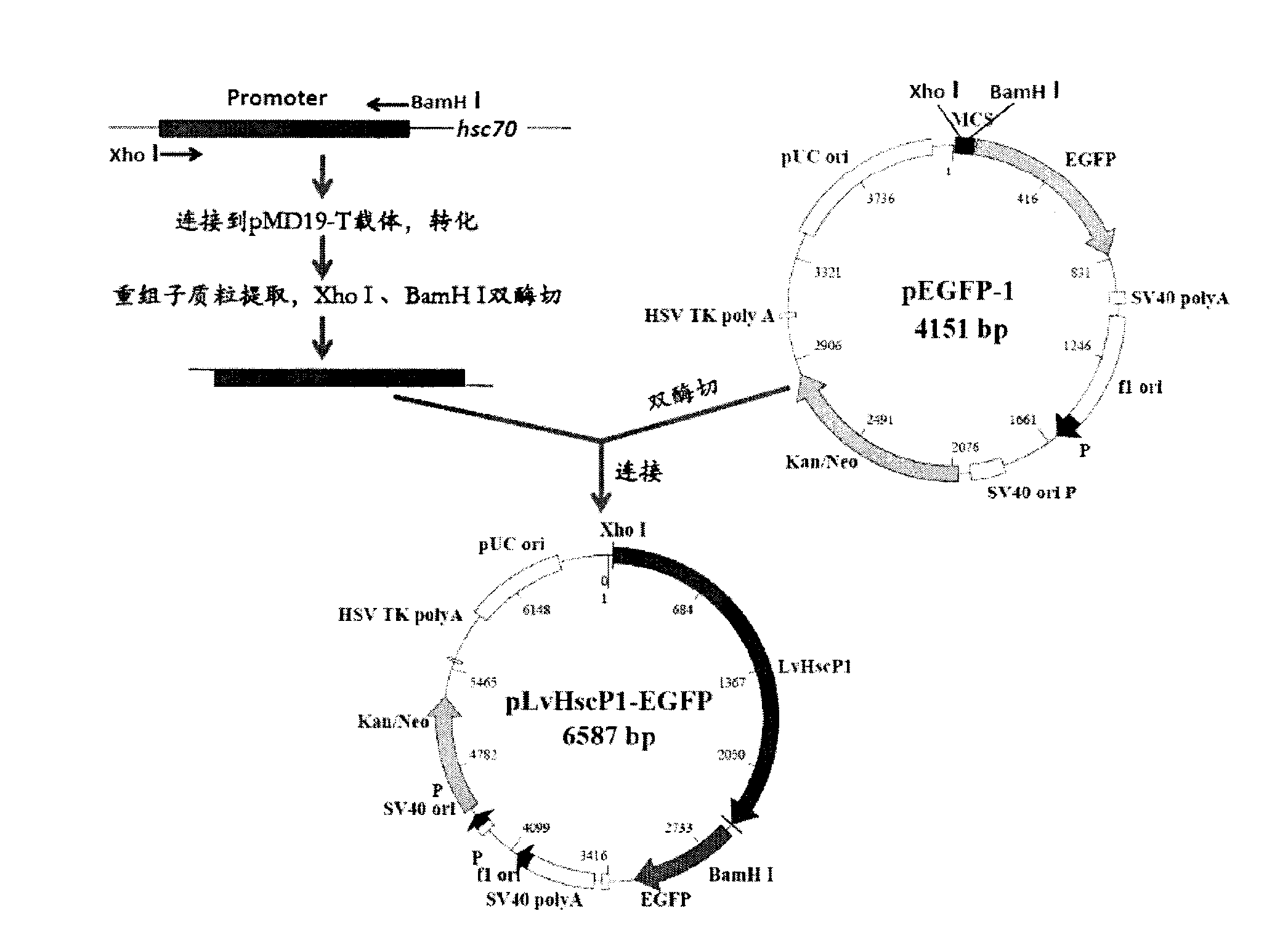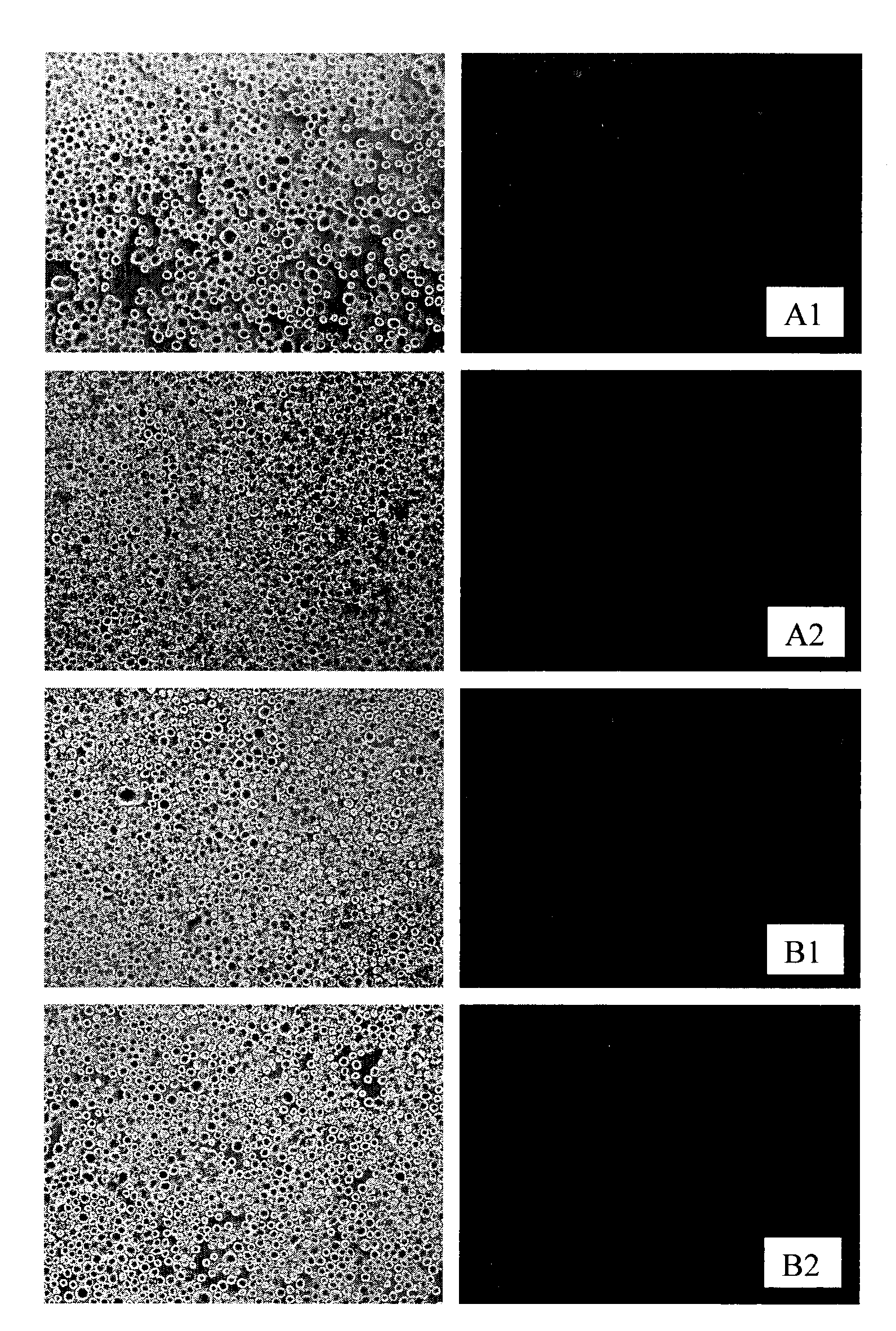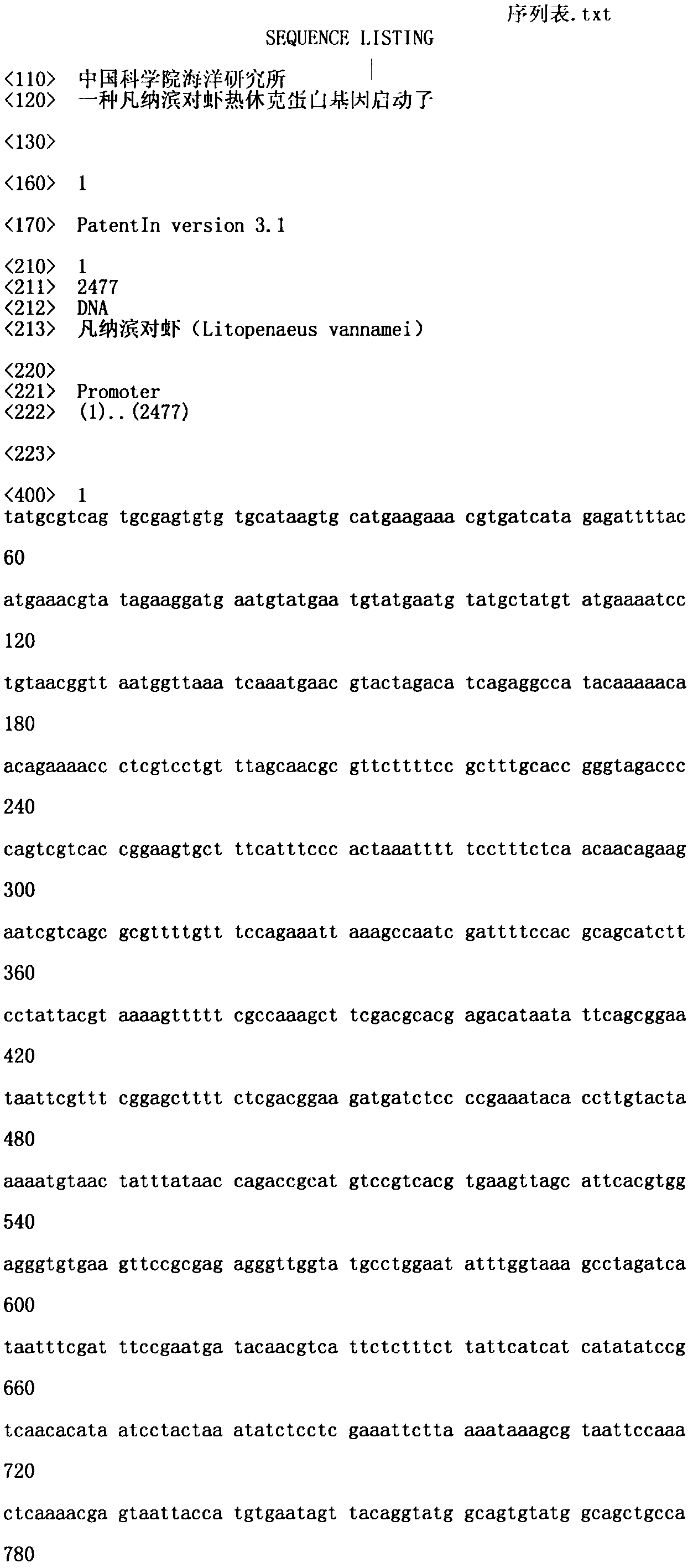Promoter for heat shock protein gene of litopenaeus vannamei
A heat shock protein and promoter technology, applied in DNA/RNA fragments, using vectors to introduce foreign genetic material, recombinant DNA technology, etc., can solve the problems of non-transgenic applications, achieve high biological safety, improve screening efficiency, Effects that are easy to observe and detect
- Summary
- Abstract
- Description
- Claims
- Application Information
AI Technical Summary
Problems solved by technology
Method used
Image
Examples
Embodiment 1
[0022] Example 1 Screening of BAC clones containing the heat shock protein gene hsc70 of Litopenaeus vannamei
[0023] The construction of Litopenaeus vannamei BAC library clone pool comprises the following steps:
[0024] (1) Construction of plate pool: with a 384-well plate as a unit, 384 clones were mixed in equal amounts, and the obtained mixed clones were a plate pool.
[0025] (2) Construction of row pool and column pool: 24 clones in each row of the 384-well plate are mixed in equal amounts, and the obtained mixed clones form a row pool, and 16 clones in each column are mixed in equal amounts, and the obtained mixed clones form a column pool.
[0026] (3) Construction of super pools: Arrange plate pools in a certain order into 96-well plates, and then construct row pools and column pools for these plate pools arranged on 96-well plates.
[0027] Screening of positive clones containing heat shock protein gene of Litopenaeus vannamei:
[0028] The forward primer 5'-CCC...
Embodiment 2
[0082] Example 2 Cloning of the promoter fragment of the heat shock protein gene of Litopenaeus vannamei
[0083] The measured full length of the BAC clone was analyzed, and the first base of the heat shock protein gene hsc70 was recorded as +1. Take the base sequence from -3800 to 0 for promoter prediction. Three promoter regions with high scores (0.701, 0.773 and 0.696, respectively) were predicted at -700, -1600 and -3100 bases, respectively. According to the homology comparison, the gene is still transcribed at -1200 base, so the base sequence between -3700 and -1200 is determined as the promoter region of the heat shock protein gene.
[0084] Primers were designed on both sides of the promoter, and different uncut sites (Xho I and BamH I) were added, and the promoter region was amplified by polymerase chain reaction (PCR). Design forward primer F1: 5'-CTCGAGTATGCGTCAGTGCGAGTGTG-3' and reverse primer R1: 5'-GGATCCCAAATAGATCATTGGCTTACCTTAT-3' and perform polymerase chain ...
Embodiment 3
[0089] Example 3 Construction of promoter expression vector and transgenic vector pLvHscP1-EGFP
[0090] The extracted plasmid was double digested with restriction endonucleases Xho I and BamH I, and the promoter fragment in the sequence listing shown in SEQ ID NO 1. was reclaimed;
[0091] The vector pEGFP-1 was double digested with restriction enzymes Xho I and BamH I, and the linearized pEGFP-1 vector was recovered;
[0092] The recovered promoter fragment and pEGFP-1 vector were ligated overnight with T4 ligase. The connection system is as follows, and the molar ratio of pEGFP-1 to the promoter fragment is controlled between 1:2-6. The ligation product was transformed into DH5α Escherichia coli strain, spread on a plate containing kanamycin, and cultured overnight at 37°C. Select positive clones containing recombinants. Simultaneous detection using pEGFP-1 vector primers and promoter-specific primers.
[0093] Ligation system: T4 ligase 1 μl; 10x Buffer 1 μl; pEGFP-1 1...
PUM
 Login to View More
Login to View More Abstract
Description
Claims
Application Information
 Login to View More
Login to View More - R&D
- Intellectual Property
- Life Sciences
- Materials
- Tech Scout
- Unparalleled Data Quality
- Higher Quality Content
- 60% Fewer Hallucinations
Browse by: Latest US Patents, China's latest patents, Technical Efficacy Thesaurus, Application Domain, Technology Topic, Popular Technical Reports.
© 2025 PatSnap. All rights reserved.Legal|Privacy policy|Modern Slavery Act Transparency Statement|Sitemap|About US| Contact US: help@patsnap.com



